YES!! THIS!!
YES!! THIS!!

More Posts from Warlord-naru and Others



BEHOLD!! These are my Disneyland Floribunda roses that I bought from Jackson & Perkins. I planted them around June and the weeks following after, it looked like it was on the verge of dying. I have successfully nurtured them back to life and they are giving out so many beautiful blooms!!
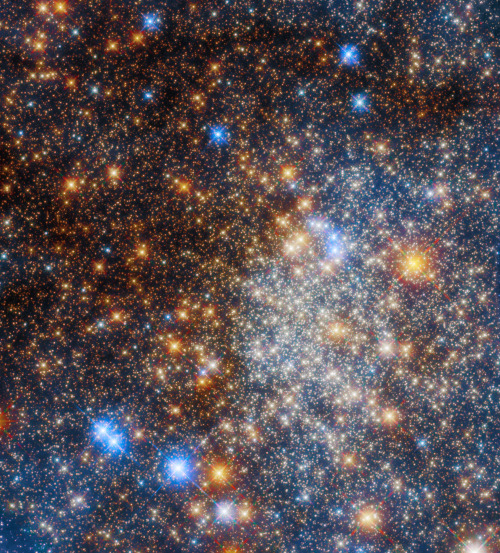
Pumpkin space latte, anyone? ☕
Hubble captured this festive array of stars, Terzan 12, found in the Milky Way about 15,000 light-years from Earth. The stars in this cluster are bound together by gravity in a sphere-like shape and are shrouded in gas and dust. As the starlight travels through that gas and dust to Earth, blue light scatters, leaving the redder wavelengths to come through.
Download the full-resolution image here.
Make sure to follow us on Tumblr for your regular dose of space!
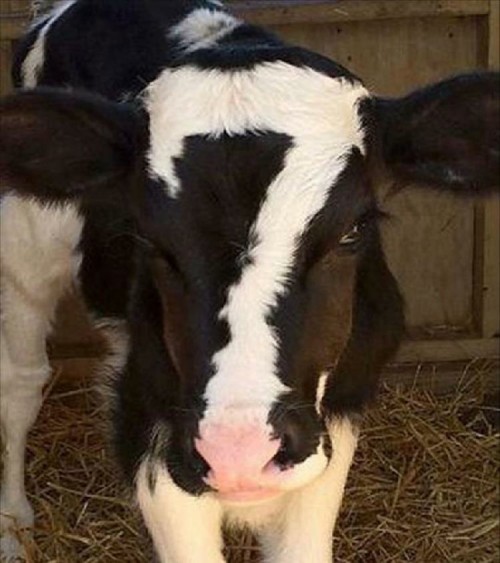




Happy pumpkin season from Fig!

How will the James Webb Space Telescope change how we see the universe? Ask an expert!
The James Webb Space Telescope is launching on December 22, 2021. Webb’s revolutionary technology will explore every phase of cosmic history—from within our solar system to the most distant observable galaxies in the early universe, to everything in between. Postdoctoral Research Associate Naomi Rowe-Gurney will be taking your questions about Webb and Webb science in an Answer Time session on Tuesday, December 14 from noon to 1 p.m EST here on our Tumblr!
🚨 Ask your questions now by visiting http://nasa.tumblr.com/ask.
Dr. Naomi Rowe-Gurney recently completed her PhD at the University of Leicester and is now working at NASA Goddard Space Flight Center as a postdoc through Howard University. As a planetary scientist for the James Webb Space Telescope, she’s an expert on the atmospheres of the ice giants in our solar system — Uranus and Neptune — and how the Webb telescope will be able to learn more about them.

The James Webb Space Telescope – fun facts:
Webb is so big it has to fold origami-style to fit into its rocket and will unfold like a “Transformer” in space.
Webb is about 100 times more powerful than the Hubble Space Telescope and designed to see the infrared, a region Hubble can only peek at.
With unprecedented sensitivity, it will peer back in time over 13.5 billion years to see the first galaxies born after the Big Bang––a part of space we’ve never seen.
It will study galaxies near and far, young and old, to understand how they evolve.
Webb will explore distant worlds and study the atmospheres of planets orbiting other stars, known as exoplanets, searching for chemical fingerprints of possible habitability.
Make sure to follow us on Tumblr for your regular dose of space!
NASA Photographers Share Their #NASAMoonSnap
We’re getting ready to launch Artemis I, the first test flight of the rocket and spacecraft that will take future astronauts to the Moon! As we prepare for the lunar voyage of the Space Launch System (SLS) rocket and Orion spacecraft launching as early as Aug. 29, 2022, we would like you to share your excitement with us. Share all types of Moon-inspired content with us with the hashtag #NASAMoonSnap, and we will choose some entries to share on our social media platforms and during the launch broadcast. Get creative! We’re looking for Moon paintings, Moon poetry, Moon pottery, Moon latte foam art — the sky is not the limit.
Since we have the full Moon coming up on Aug. 11, we wanted to share our handy dandy Moon photography guide and inspire you with some of our NASA imagery experts’ stories on capturing the Moon.

"The first rollout of the SLS rocket with the Orion spacecraft aboard was a really exciting moment to capture. I was photographing at Kennedy Space Center in an area where many of the employees that had worked on different parts of the SLS were watching. It was so great to hear some of their stories and see their pride in helping to build this amazing rocket and spacecraft. Once the mobile launcher with SLS passed the crowds to head toward the launchpad, people began to line up in their cars to leave. I decided to stick around and try to get a closer image of the Moon with SLS. It was fairly dark by the time I made this image, so there isn’t any detail in the moon, but it’s still moving to see them next to one another and know that SLS will be closer to the Moon than Earth very soon, and will one day enable humans to land on the lunar surface again!" — Aubrey Gemignani, NASA contract Photo Archivist/Photographer, NASA Headquarters

“I set up this shot when I saw the Moon was lined up perfectly with the X-1E in front of the main entrance to Armstrong Flight Research Center one morning last year. What captured my eye about this scene was that it showcased the past and the future of NASA in one image. The X-1 was a key piece of early NACA/NASA history, and it is pointing to the Moon showing us where we are going next with Artemis. I still remember walking around on my first day at NASA and seeing all the places where history was made. I was in awe as I walked these hallowed grounds. I know that there is still a great deal of history to be written here as we strive to go higher, further and faster and I’m glad that I get to be here to document it.” — Joshua Fisher, Photographer, NASA’s Armstrong Flight Research Center

“While out capturing images of the Moon, the memories of my first day as a photographer for NASA came flooding back. One of my first memories is going to the exhibits department and getting to hold an actual Moon rock sample. That day changed my perception of the Moon forever. That moment made the Moon more than just something in the sky. It became tangible and real, and my part in all of this became clear. The honor and privilege I feel everyday is overwhelming.” — Jef Janis, Still Imaging Specialist, NASA’s Glenn Research Center

“When I can, I like my Moon photos to have a sense of place. The trick is finding a shooting position and a landmark that will fit in with the Moon’s very stringent plans for rising. I went out to shoot the Sturgeon Moon, which was also a rare blue moon, last August. As I was shooting the moonrise from the riverbank in downtown New Orleans, I was lucky to have one of the city’s iconic riverboats turn a bend and head upriver to pass beneath the Moon. Happily the river was low and I was able to scramble down the high bank to reduce the vertical distance between the quickly rising moon and the slowly passing riverboat.” — Michael DeMocker, Photographer, NASA’s Michoud Assembly Facility

“I was excited to try to capture a waning crescent Moon at dawn, even though it was late February, 20 degrees Fahrenheit and 6:30 in the morning…Nonetheless, I decided to photograph on-site at Lewis Field, and ended up using my telephoto lens to really zoom in on the Moon. In a race against the sunrise and the Moon disappearing, I was able to capture a cool shot of the Moon with a couple planes making an appearance as well (The Cleveland Hopkins Airport is right next door). Although is it me, or does one of the planes look like a rocket taking off…?” — Jordan Salkin, Scientific Imaging Specialist, NASA’s Glenn Research Center

“I have worked at NASA’s Glenn Research Center since 1990 and have enjoyed every second doing what I do to support NASA’s mission. On my first day back to work onsite after 22 months of telework I saw this beautiful sunrise with the snow, the Moon, and the hangar. It felt good to be at work seeing the landscape I was so used to seeing. I had to take these pictures to share with my colleagues. ” — Jeffrey F. Abbott, Media Support Specialist, NASA’s Glenn Research Center
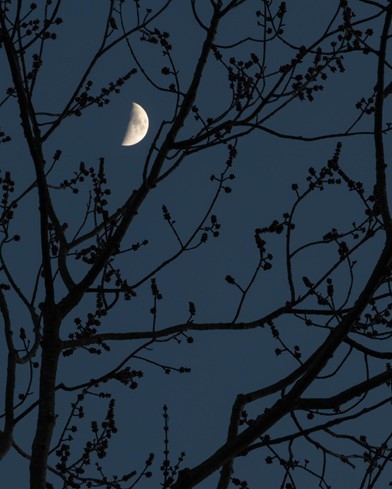
“In creating this Moon image, I almost felt pressured to find the ‘perfect location.’ The more that I thought about that prospect, the more I was drawn to using only natural elements, in my own environment. I wanted to find an image in my own backyard. This image was captured just as the Sun dropped below the horizon. I had a very short window of time when these colors would be possible. Two minutes earlier or later would have produced a totally different image. The almost abstract lines of a Maple tree in the earliest stages of budding seemed to be in concert with the waxing crescent Moon, both preparing for full bloom. Nature on display in its simplicity.” — Marvin Smith, Still Imaging Specialist Lead, NASA’s Glenn Research Center

“The lighthouse in Lorain, Ohio, has been photographed by amateur and professional photographers for decades, but I have never photographed it before. When I calculated that the path of the Moon was going to go over and past the lighthouse with a reflection over the water, I decided to give it a try. I encountered four other photographers on the same pier with me that early morning. They were huddled in the middle of the pier and I was at the end. I think I got the best photo.” — Quentin Schwinn, Scientific Photographer, NASA’s Glenn Research Center
Make sure to follow us on Tumblr for your regular dose of space!
You Are Made of Stardust
Though the billions of people on Earth may come from different areas, we share a common heritage: we are all made of stardust! From the carbon in our DNA to the calcium in our bones, nearly all of the elements in our bodies were forged in the fiery hearts and death throes of stars.
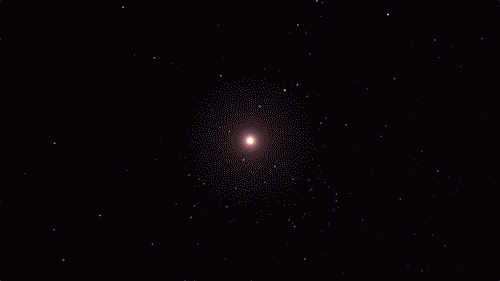
The building blocks for humans, and even our planet, wouldn’t exist if it weren’t for stars. If we could rewind the universe back almost to the very beginning, we would just see a sea of hydrogen, helium, and a tiny bit of lithium.
The first generation of stars formed from this material. There’s so much heat and pressure in a star’s core that they can fuse atoms together, forming new elements. Our DNA is made up of carbon, hydrogen, oxygen, nitrogen, and phosphorus. All those elements (except hydrogen, which has existed since shortly after the big bang) are made by stars and released into the cosmos when the stars die.

Each star comes with a limited fuel supply. When a medium-mass star runs out of fuel, it will swell up and shrug off its outer layers. Only a small, hot core called a white dwarf is left behind. The star’s cast-off debris includes elements like carbon and nitrogen. It expands out into the cosmos, possibly destined to be recycled into later generations of stars and planets. New life may be born from the ashes of stars.
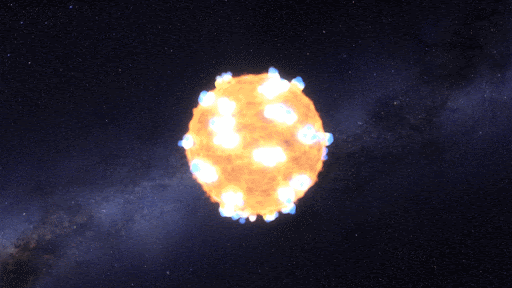
Massive stars are doomed to a more violent fate. For most of their lives, stars are balanced between the outward pressure created by nuclear fusion and the inward pull of gravity. When a massive star runs out of fuel and its nuclear processes die down, it completely throws the star out of balance. The result? An explosion!
Supernova explosions create such intense conditions that even more elements can form. The oxygen we breathe and essential minerals like magnesium and potassium are flung into space by these supernovas.
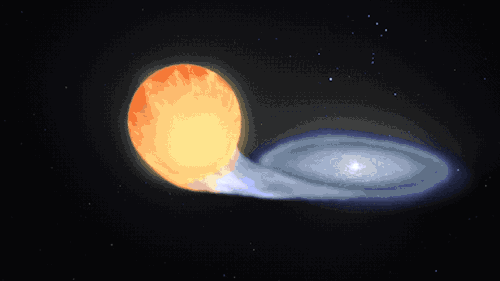
Supernovas can also occur another way in binary, or double-star, systems. When a white dwarf steals material from its companion, it can throw everything off balance too and lead to another kind of cataclysmic supernova. Our Nancy Grace Roman Space Telescope will study these stellar explosions to figure out what’s speeding up the universe’s expansion.
This kind of explosion creates calcium – the mineral we need most in our bodies – and trace minerals that we only need a little of, like zinc and manganese. It also produces iron, which is found in our blood and also makes up the bulk of our planet’s mass!

A supernova will either leave behind a black hole or a neutron star – the superdense core of an exploded star. When two neutron stars collide, it showers the cosmos in elements like silver, gold, iodine, uranium, and plutonium.

Some elements only come from stars indirectly. Cosmic rays are nuclei (the central parts of atoms) that have been boosted to high speed by the most energetic events in the universe. When they collide with atoms, the impact can break them apart, forming simpler elements. That’s how we get boron and beryllium – from breaking star-made atoms into smaller ones.
Half a dozen other elements are created by radioactive decay. Some elements are radioactive, which means their nuclei are unstable. They naturally break down to form simpler elements by emitting radiation and particles. That’s how we get elements like radium. The rest are made by humans in labs by slamming atoms of lighter elements together at super high speeds to form heavier ones. We can fuse together elements made by stars to create exotic, short-lived elements like seaborgium and einsteinium.
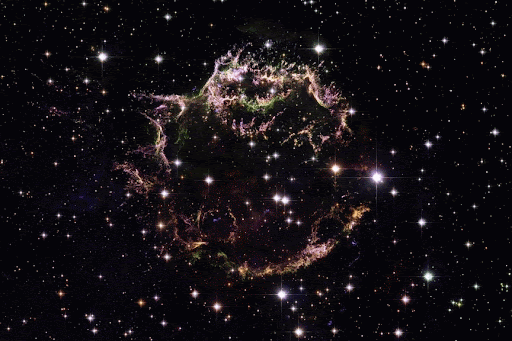
From some of the most cataclysmic events in the cosmos comes all of the beauty we see here on Earth. Life, and even our planet, wouldn’t have formed without them! But we still have lots of questions about these stellar factories.
In 2006, our Stardust spacecraft returned to Earth containing tiny particles of interstellar dust that originated in distant stars, light-years away – the first star dust to ever be collected from space and returned for study. You can help us identify and study the composition of these tiny, elusive particles through our Stardust@Home Citizen Science project.
Our upcoming Roman Space Telescope will help us learn more about how elements were created and distributed throughout galaxies, all while exploring many other cosmic questions. Learn more about the exciting science this mission will investigate on Twitter and Facebook.
Make sure to follow us on Tumblr for your regular dose of space!

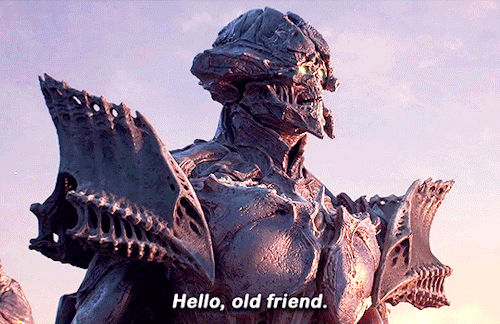

DESTINY 2: THE WITCH QUEEN | 22.2.22
-
 one-in-a-maxi-million reblogged this · 1 month ago
one-in-a-maxi-million reblogged this · 1 month ago -
 grausampossum liked this · 1 month ago
grausampossum liked this · 1 month ago -
 luridleviathan reblogged this · 1 month ago
luridleviathan reblogged this · 1 month ago -
 luridleviathan liked this · 1 month ago
luridleviathan liked this · 1 month ago -
 metamans liked this · 5 months ago
metamans liked this · 5 months ago -
 blackfire493 liked this · 6 months ago
blackfire493 liked this · 6 months ago -
 drawinaussie reblogged this · 6 months ago
drawinaussie reblogged this · 6 months ago -
 drawinaussie liked this · 6 months ago
drawinaussie liked this · 6 months ago -
 lavalamp-juice liked this · 6 months ago
lavalamp-juice liked this · 6 months ago -
 oldfangirl81 liked this · 6 months ago
oldfangirl81 liked this · 6 months ago -
 honktraband01 liked this · 6 months ago
honktraband01 liked this · 6 months ago -
 animelover20 reblogged this · 6 months ago
animelover20 reblogged this · 6 months ago -
 animelover20 liked this · 6 months ago
animelover20 liked this · 6 months ago -
 ghostenluvs reblogged this · 6 months ago
ghostenluvs reblogged this · 6 months ago -
 requiem-under-the-stars reblogged this · 6 months ago
requiem-under-the-stars reblogged this · 6 months ago -
 requiem-under-the-stars reblogged this · 6 months ago
requiem-under-the-stars reblogged this · 6 months ago -
 requiem-under-the-stars liked this · 6 months ago
requiem-under-the-stars liked this · 6 months ago -
 unfortunate-songbird reblogged this · 6 months ago
unfortunate-songbird reblogged this · 6 months ago -
 echoesofreverie liked this · 8 months ago
echoesofreverie liked this · 8 months ago -
 human-in-name-only liked this · 9 months ago
human-in-name-only liked this · 9 months ago -
 nobeerreviews liked this · 9 months ago
nobeerreviews liked this · 9 months ago -
 love-is-my-superpower liked this · 9 months ago
love-is-my-superpower liked this · 9 months ago -
 faeking-it liked this · 9 months ago
faeking-it liked this · 9 months ago -
 cocolechatnoir reblogged this · 9 months ago
cocolechatnoir reblogged this · 9 months ago -
 cocolechatnoir liked this · 9 months ago
cocolechatnoir liked this · 9 months ago -
 psychic-enemy-dragon liked this · 9 months ago
psychic-enemy-dragon liked this · 9 months ago -
 human-in-name-only reblogged this · 9 months ago
human-in-name-only reblogged this · 9 months ago -
 half-asleep-star reblogged this · 10 months ago
half-asleep-star reblogged this · 10 months ago -
 half-asleep-star liked this · 10 months ago
half-asleep-star liked this · 10 months ago -
 nocturnalgemstones liked this · 1 year ago
nocturnalgemstones liked this · 1 year ago -
 it-is-ok-i-am-ok liked this · 1 year ago
it-is-ok-i-am-ok liked this · 1 year ago -
 ziofranko liked this · 1 year ago
ziofranko liked this · 1 year ago -
 brainplease-dont reblogged this · 1 year ago
brainplease-dont reblogged this · 1 year ago -
 neurodivergent-velociraptor liked this · 1 year ago
neurodivergent-velociraptor liked this · 1 year ago -
 myfreedomformoutterdemons liked this · 1 year ago
myfreedomformoutterdemons liked this · 1 year ago -
 angelredhead liked this · 1 year ago
angelredhead liked this · 1 year ago -
 evil-gender liked this · 1 year ago
evil-gender liked this · 1 year ago -
 harmony-discord-pipeline reblogged this · 1 year ago
harmony-discord-pipeline reblogged this · 1 year ago -
 ioncestabbedsomeonewithapen liked this · 1 year ago
ioncestabbedsomeonewithapen liked this · 1 year ago -
 diesteepatverna liked this · 1 year ago
diesteepatverna liked this · 1 year ago -
 angryblondewithajetblackheart liked this · 1 year ago
angryblondewithajetblackheart liked this · 1 year ago -
 synoicus liked this · 1 year ago
synoicus liked this · 1 year ago -
 theeverchangingusername reblogged this · 1 year ago
theeverchangingusername reblogged this · 1 year ago -
 talewatcher liked this · 1 year ago
talewatcher liked this · 1 year ago -
 i-belong-in-a-retirement-home liked this · 1 year ago
i-belong-in-a-retirement-home liked this · 1 year ago -
 violanerd08 liked this · 1 year ago
violanerd08 liked this · 1 year ago

Information security professional for a major firm. Overall geek and gamer. Lover of all things Sighthounds. My immune system hates me, along with the occasional attempted suffocation done thanks to my lungs. On top of that, working through severe depression and anxiety plus a side of ADHD. I'm a broken human being.
186 posts
